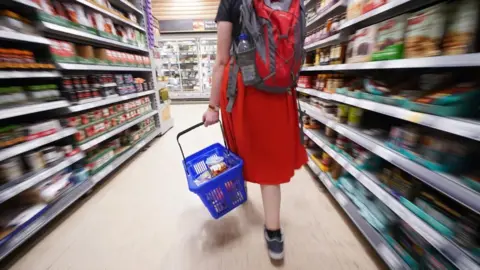### Rising Costs of Meat and Tea Inflates Food Prices
New research indicates that the heightened prices of meat and tea have significantly contributed to the ongoing increase in food price inflation, marking the sixth consecutive month of consistent rises. This alarming trend is encapsulated in the latest shop price monitor released by the British Retail Consortium (BRC), which revealed that food prices escalated by 4% in the year leading up to July, a slight increase from the 3.7% rise noted in June.
Helen Dickinson, the chief executive of the BRC, highlighted that tighter global supplies of essential commodities, particularly meat and tea, have severely impacted wholesale prices. The findings from the BRC resonate with separate research disseminated last week, which forecasted that household grocery expenses could surge by approximately £275 this year.
The BRC survey meticulously tracked the inflation of various food categories; it revealed that the inflation rate for fresh food such as fruits and vegetables remained stable at 3.2% in the year concluding in July. However, a notable rise was observed in the inflation rate for cupboard essentials, which climbed to 5.1% during the same period.
Ms. Dickinson emphasized that many families are likely experiencing the effects of these higher food bills firsthand. “Staples such as meat and tea were hit the hardest as wholesale prices for both categories have been affected by tighter global supplies, contributing to the overall inflation in shop prices,” she stated.
The perpetual increase in food prices is also leading to heightened concerns regarding the implications for household budgets. Andrew Keeble, the managing director and founder of Heck Sausages, discussed the myriad factors contributing to rising beef and chicken prices on the BBC’s Today programme. He described the situation as a “perfect storm,” particularly emphasizing how chicken prices have surged from £2.85 per kilo to £5.50 over the past two years – a result of avian flu impacting stock levels and a decrease in stock intensity.
He noted that while there have been changes in practices to support animal welfare, the structural issues, namely a reduction in the number of chickens per shed and overall availability, are compelling prices to soar. Despite his company’s efforts to contain additional costs passed on to retailers and consumers, Mr. Keeble acknowledged that the burden of these rising costs is ultimately being felt by shoppers.
### Impacts on Inflation and Consumer Power
The inflationary pressure on food prices has been exacerbating the overall increase in UK inflation rates. In June, official statistics from the Office for National Statistics (ONS) indicated that inflation, as measured by the Consumer Price Index (CPI), rose to 3.6%, climbing from 3.4% in May. Specifically, food and non-alcoholic beverage prices witnessed a significant hike of 4.5% over the year, marking the highest increase since February 2024.
Mike Watkins, who leads retailer and business insights at NIQ, expressed concern that the rising inflation would weigh heavily on retailers aiming to keep customers engaged during the summer shopping season. “Consumers’ household budgets are coming under pressure, with the food retailers now experiencing price increases that exceed the CPI,” he remarked.
Nevertheless, he noted that competitive pricing strategies and promotional activities would still enable consumers to save money by smart shopping practices. Ms. Dickinson did point out that there were some “bright spots” in the research—for instance, discounts in fashion and home improvement sectors, which could offer consumers opportunities to refresh their wardrobes and residences despite challenging food price conditions.
On the whole, the general inflation for shop prices has grown to 0.7% from 0.4% in June, which is notably higher than the three-month average of 0.3%. Analytical insights from Worldpanel by Numerator have further indicated food prices have surged by 5.2% when compared annually, largely driven by increased costs for essentials such as chocolate, butter, spreads, and fresh meat.
With these developments, the escalating costs of food are set to impact not only individual household budgets but also the broader economic landscape in the UK as inflation pressures persist. The combined situation calls for strategic responses from both retailers and consumers to navigate these challenging financial waters.












